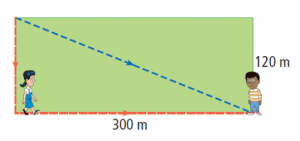In what ways would you teach an LfU-based activity to explore a concept in math or science? Draw on LfU and My World scholarship to support your pedagogical directions. Given its social and cognitive affordances, extend the discussion by describing how the activity and roles of the teacher and students are aligned with LfU principles.
The Learning-for-Use framework developed by Edelson (2001) is based on knowledge as being a “goal-directed process” in which knowledge is constructed and shaped by the application of the knowledge, either consciously or unconsciously. For Edelson, the procedural knowledge is just as important and connected in the knowledge construction process as declarative knowledge Furthermore, the LfU model consists of three key steps to ensuring students “foster useful conceptual understanding that will be available to the learner when it is relevant”; Motivation, Knowledge Construction, and Knowledge Refinement. (Edelson, D., 2001).
Therefore, in considering an LfU-based activity for upper elementary students in math, I would focus my efforts in following the three key steps of the model. In addition, from the evidence presented in the case study ‘Camila, the earth, and the sun: Constructing an idea as shared intellectual property’ (Radinksy, J., Oliva, S., Alamar, K., 2009), I would aim to incorporate several opportunities for communication as a way of constructing knowledge as a whole group, utilizing shared modeling, shared contributions, and negotiation to reinforce conceptual understandings.
The unit I would be presenting using the LfU model would be related to Time Zones in math, as this can be a challenging concept for students to understand when not made relevant to their lives.
Motivate: In the beginning of the unit, I would introduce students to the idea that one of their classmates would be traveling during part of the school year to Toronto followed by Paris, France. This fellow classmate wants to skype in to the class at least twice to see how things are going. Students would need to figure out when would be an appropriate time to skype their classmate. As I have had a few students in the past travel during the year and want to skype in to see the class, this can be both a relevant and motivating activity for students to engage in. This introductory activity would also elicit curiosity, as students might quickly determine that 7am is too early and 6pm too late, but they would likely come to realize, through discussion with each other, that they may not know the exact time difference to Toronto, from Vancouver, and then again to France. Given a map of the world, students would need to identify the times appropriate for Vancouver, then challenge themselves to fill in the gaps of the time zones for Eastern Canada and France. They would fill in their reasoning in written or oral form. Teacher facilitated discussions would help students see the gaps in their knowledge, before beginning the construction phase of building connections.
Construct: Students would be introduced to Google Earth, using the layer of Time Zone Problems, downloaded from www.realworldmath.org. From there, they would observe and take notes in a Google Classroom spreadsheet, recording the time zones and making notes of the relationships they notice. Again, teacher prompts and other students’ prompting can help collectively piece together the conceptual understanding. With the spreadsheet acting as a collective journal, students could collaboratively come up with the ‘rules’ for identifying a given time across the world, including time origin, EST, PST, UST, etc.
Refine: Finally, a class schedule come be drawn up with all the possibilities. By leveraging peers’ language to clarify their own reasoning and negotiating language and representation to develop a shared explanation (Radinsky et al., 2009), the class would use the spreadsheet to create a schedule for when to skype the student on holiday, keeping in mind what might be accomplished on the holiday and knowing which times need to be avoided (during the day that student might be visiting a museum or at the beach, without access to their computer). To better assist in their final explanation, paths, pins and image overlays could be drawn on Google Earth and presented.
The entire process incorporates the LfU model by constructing knowledge by making it applicable, but also incorporates the aspect of communication as a way of constructing a shared understanding to avoid individual misconceptions that might go unnoticed without intervention.
References:
Edelson, D.C. (2001). Learning-for-use: A framework for the design of technology-supported inquiry activities. Journal of Research in Science Teaching,38(3), 355-385.
Radinsky, J., Oliva, S., & Alamar, K. (2009). Camila, the earth, and the sun: Constructing an idea as shared intellectual property. Journal of Research in Science Teaching, 47(6), 619-642.
 How much farther would Jane walk to reach Albert if she went around the field, as opposed to directly across?
How much farther would Jane walk to reach Albert if she went around the field, as opposed to directly across?